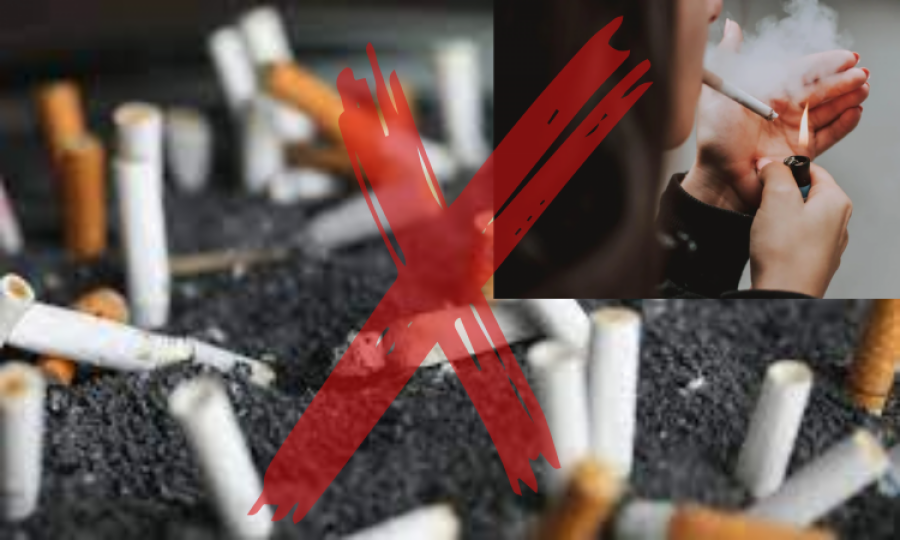A Global First: New Zealand passes tobacco endgame bill

WASHINGTON: Today, the New Zealand Parliament adopted the strongest anti-tobacco law in world history. Once implemented, the Smokefree Environments and Regulated Products (Smoked Tobacco) Amendment Bill is expected to phase out the tobacco epidemic in the country and set a global example of what is possible when policymakers, researchers and advocates unite to follow the data and protect their citizens. Other countries have already vowed to follow suit.
“Today, history was made for public health and for the generations of families who have lost loved ones to the preventable diseases caused by ordinary tobacco use,” said Action on Smoking and Health (ASH) Executive Director Laurent Huber. “New Zealand has single-handedly changed the course of what is possible in tobacco regulations and we stand ready to help other jurisdictions follow their groundbreaking lead.”
The Smokefree Environments and Regulated Products (Smoked Tobacco) Amendment Act includes three novel components attacking the tobacco epidemic from different angles.
First, it will ban the commercial sale of combustible tobacco products to anyone born on or after January 1, 2009. The concept, called “Smoke-Free Generation” or SFG, can also be characterized as a sales ban with a grandfather clause for existing adults who smoke. New Zealand will be only the third jurisdiction to pass such a law, following Balanga City in the Philippines – which has been unable to implement the law due to litigation – and Brookline, Massachusetts, which implemented a similar law (tobacco-free generation) in January 2021 and successfully defended an industry lawsuit in October 2022. Unlike New Zealand, Balanga City and Brookline banned sales to anyone born this century, and included all tobacco products, rather than a focus on combustibles.
“It’s important to stress that the Smoke-Free Generation law applies only to sales of combustible tobacco,” stressed Huber from ASH, which has endorsed SFG for years. “The law does not outlaw individual purchase, possession or use – or the act of smoking. The problem here is the tobacco industry, not their victims.”
The second leg of the law is a drastic reduction in the number of retailers – researchers estimate that the final reduction may be as much as 95%. Numerous studies have shown that people who smoke – like people who face any addiction –– find it easier to kick their addiction if cigarettes aren’t staring them in the face in every store.
Finally, the new law includes reducing nicotine content in cigarettes to below-addictive levels. Nicotine addiction is the driving force of the tobacco epidemic. Reducing it will make it far less likely for children to start smoking and far easier for adults to quit.
New Zealand was the first of the so-called “ASPIRE” countries that have set bold tobacco endgame goals. In 2010, the New Zealand Ministry of Health announced its intention to drive smoking prevalence below 5% by 2025. After reviewing progress toward this goal a few years ago, researchers realized that demand-reduction measures like taxation and smoke-free air laws would not be enough to reach the goal.
“Many countries have set aggressive tobacco control goals over the years,” continued Huber. “They almost never achieve them, and simply set a new goal. New Zealand deserves enormous credit for instead changing their strategy and remaining committed to their goal.”
The Smokefree Aotearoa process was largely driven by the country’s native Maori community, who smoke at a far higher prevalence than the general population and face more consequences as a result. The most significant aspect of the new approach is a focus on supply rather than demand, spurred by a growing recognition that the blame for the tobacco epidemic falls squarely on the tobacco industry rather than the users of its products.
“Nearly all adults who smoke were intentionally addicted as children,” said Huber. “The industry has spent half a century perfecting the cigarette as an addiction machine. They are far more addictive and therefore dangerous than they were at the height of smoking in the U.S., in the 1960s.”
Other jurisdictions in the U.S. are expected to follow Brookline, MA now that they have successfully defended their law in court, and at least a dozen countries have voiced their intention to follow New Zealand’s approach, including Singapore, Malaysia and the European Union.
New Zealand has no doubt changed the public health landscape and set the new standard for regulating away the tobacco epidemic.
Advertisement
Trending
Popular
Hair loss: Discovery uncovers key stem cells that could reverse ...
-
Broccoli sprout compound may help lower ...
11:31 AM, 25 Feb, 2025 -
Gas Pain vs. Heart Attack: How to tell ...
09:00 PM, 22 Feb, 2025 -
Coconut oil supplement shows promise ...
08:00 PM, 20 Feb, 2025 -
Normal vitamin B12 levels may still ...
05:00 PM, 19 Feb, 2025



